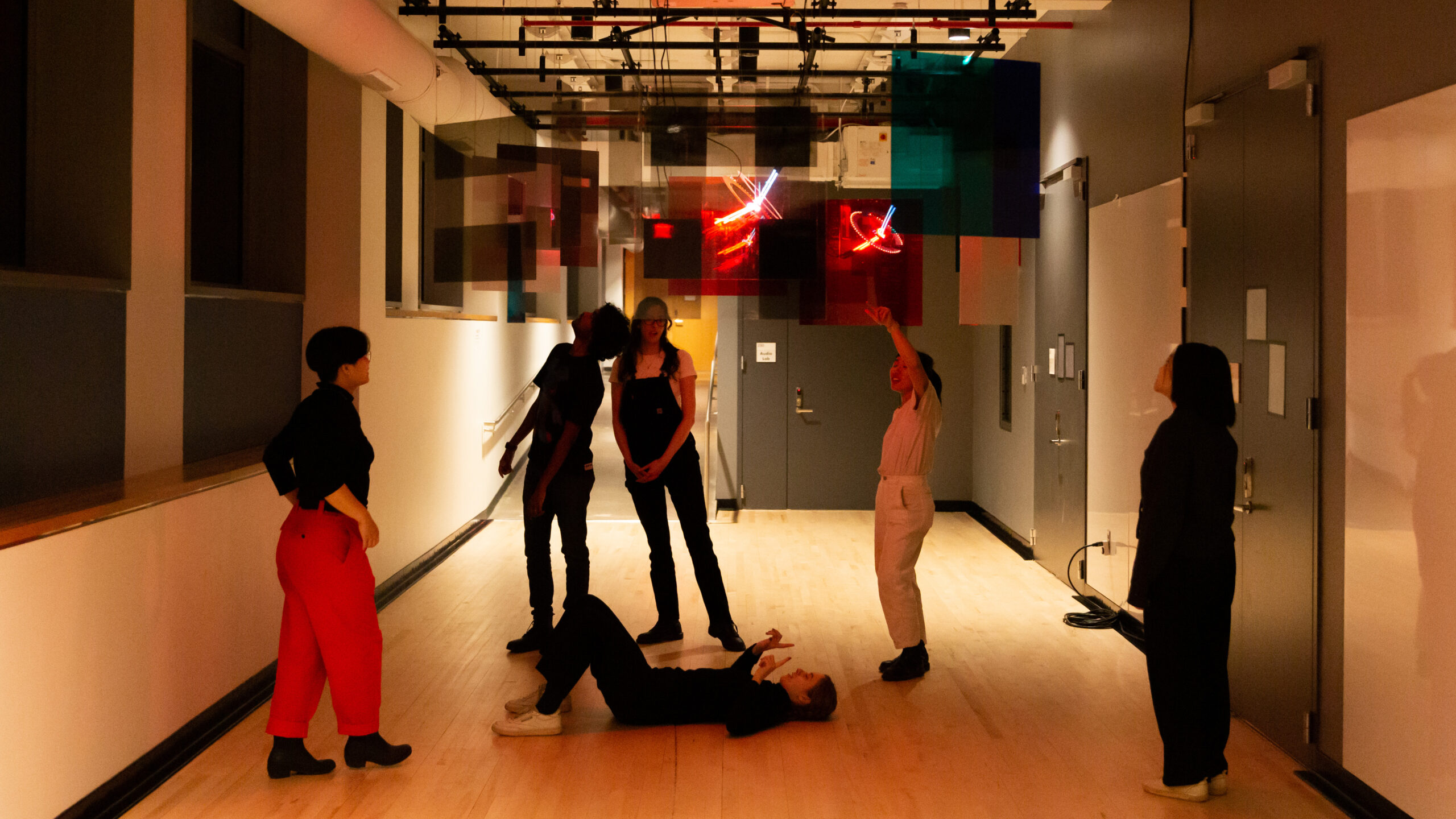Abstract
I’m Here Now is a site-specific installation exploring the idea of distorted perception and the concept of asynchronous existence between individuals, specifically between myself and others. By placing it in a liminal space, I position myself in a place where people pass through but never stay.
Drawing inspiration from the solar eclipse and the dynamic between mankind and the universe, I see similarities in the corporeal relationships among human entities and celestial bodies. As we go about our daily lives, we routinely move closer to, drift apart from, and sometimes revolve around each other. In the process, we tend to see each other's existence in distortion and obscurity. And because of the physical distance between us, we always experience realities at different times.
The first edition of I'm Here Now is site-specific to a corridor at 370 Jay St, Brooklyn, a space between offices and a student communal area. At the center of the space is a suspended light sculpture consisting of two neon pieces and two Printed Circuit Boards (PCBs). Surrounding the light sculpture are 14 panels of acrylic sheets with various types of optical filters at different heights. All suspended objects loosely occupy the width of the space, prompting people to walk around or pass underneath, much like the interaction between celestial objects. When doing so, because of the filters, the central light sculpture can be viewed in many different colors and textures. The light sculpture breathes on its own and reacts to every person passing by, both visually and sonically. It depicts my journey of crafting an identity while living in a foreign land, reconciling with the way I am often perceived - distorted and obscured.

Research
THE SPECTRUM OF NEON LIGHT
These suspended panels are not made of tinted acrylic, but instead are made of clear acrylic sheets with optical filters adhered to them using cold press lamination. Why not use tinted acrylic sheets directly? How did I choose which optical filters to use?
In the summer of 2022, I was experimenting with a telescope eyepiece that had been modified with diffraction gratings, which allowed me to see the spectrum of any light source through it. I was fascinated, just like the first time I learned about this in high school physics. In the form of light, any one color we see could be composed of countless different colors. This one color light then allows us to see countless different colors in our world. I felt like there was a metaphor there that I couldn't quite pinpoint.
At the time, I had just begun learning to bend neon glass. With this device, I was able to witness neon light's unique spectral characteristics, and I have been mesmerized by this delicate and mysterious medium ever since. When selecting the optical filters for this installation, I used a lighting filter swatch book to look at Neon and Argon-Mercury, and discovered some interesting effects that would not have been possible with conventional light sources like incandescent or LED. As a result, my selections were largely based on how effective a filter is at changing the color and texture of neon while preserving a certain level of light transmission.
Technical Details
14 panels of optical filters are suspended at varying heights from 5'6" to 6'6". Two neon pieces and two PCBs are suspended at a height of 7'. The neon pieces are powered by 120V-7KV transformers, wired to a relay, controlled by an Arduino, and triggered by a PIR motion sensor to perform a pseudo-random glitching pattern, which is also perceived sonically due to the noise of the relay's mechanical switch. One of the PCBs has warm white LEDs arranged in a circle, which slowly fade up and down at a regular breathing speed.









